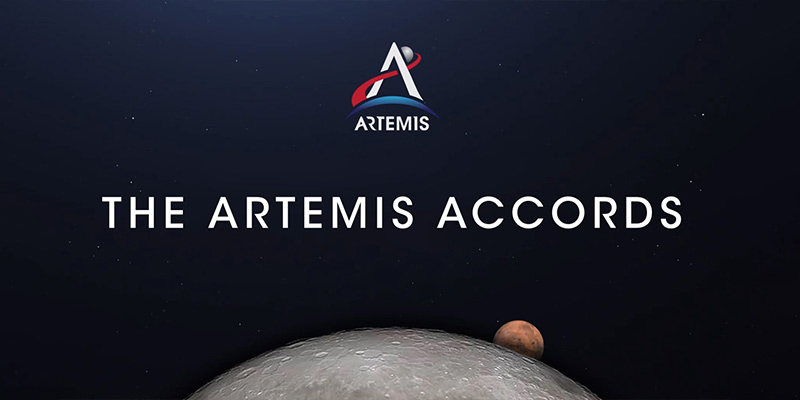- India
- Jun 23
Explainer - India signs Artemis Accords
Prime Minister Narendra Modi has said that India has taken a big leap forward in space cooperation after it joined the Artemis Accords.
The White House said India has signed the Artemis Accords, which advance a common vision of space exploration for the benefit of all humankind.
India joins 26 other countries committed to peaceful, sustainable, and transparent cooperation that will enable exploration of the Moon, Mars, and beyond.
Artemis Accords
• Grounded in the Outer Space Treaty of 1967 (OST), the Artemis Accords are a non-binding set of principles designed to guide civil space exploration and use in the 21st century.
• These principles, which include transparency, peaceful purposes, registering of space objects and release of scientific data, help make the space environment safer and more predictable, and allow all nations – even those without space programmes – to benefit from the data obtained in space.
• Co-led for the United States by the Department of State and the National Aeronautics and Space Administration (NASA), the Artemis Accords were launched on October 13, 2020 with Australia, Canada, Italy, Japan, Luxembourg, the United Arab Emirates, the United Kingdom and the United States.
• Currently, there are 26 signatories.
• From the original eight nations in 2020, Artemis Accords signatories now hail from every part of the globe and possess a variety of space capabilities and interests.
• The Artemis Accords signatories are: Australia, Bahrain, Brazil, Canada, Colombia, Czech Republic, Ecuador, France, Israel, Italy, Japan, the Republic of Korea, Luxembourg, Mexico, New Zealand, Nigeria, Poland, Romania, Rwanda, Saudi Arabia, Singapore, Spain, Ukraine, the United Arab Emirates, the United Kingdom, and the United States.
The Outer Space Treaty
• The creation of a special regime for outer space and celestial bodies was necessitated by the commencement of space activities with the launch of the first artificial satellites of the Earth under an international scientific programme, the International Geophysical Year (1957-1958), and the rapid development of rocket technology during that period.
• The Treaty on Principles Governing the Activities of States in the Exploration and Use of Outer Space, Including the Moon and Other Celestial Bodies, which is usually called the Outer Space Treaty, is one of the most significant law-making treaties concluded in the second half of the 20th century.
• It was adopted by the United Nations General Assembly on December 19, 1966, opened for signature at London, Moscow and Washington on January 27, 1967, and entered into force on October 10, 1967.
• The Outer Space Treaty laid down the foundations of international regulation of space activities and thus established the framework of the present legal regime of outer space and celestial bodies.
• Over 100 countries are parties to the treaty.
• India signed the treaty in March 1967 and ratified it in 1982.
NASA to train Indian astronauts
• NASA will provide advanced training to Indian Space Research Organisation (ISRO) astronauts with the goal of launching a joint effort to the International Space Station in 2024.
• Additionally, NASA and the ISRO are developing a strategic framework for human spaceflight cooperation by the end of 2023.
• India approved a $318 million investment to construct a Laser Interferometer Gravitational-Wave Observatory in India — that will work in tandem with similar facilities in the United States, Europe, and Japan to look for ripples in space-time, known as gravitational waves, that provide insights into the physical origins of the universe.
• Scientific payloads for the NASA-ISRO Synthetic Aperture Radar (NISAR) have been delivered to India and will be launched in 2024, and will measure Earth’s changing ecosystems like natural hazards and sea level rise.
• The US Geological Survey and ISRO are negotiating expanded bilateral data exchange that will enable greater insight about the Earth, including for a range of applications, such as climate resiliency, sustainable development and management of natural resources, and disaster management support.
Manorama Yearbook app is now available on Google Play Store and iOS App Store

